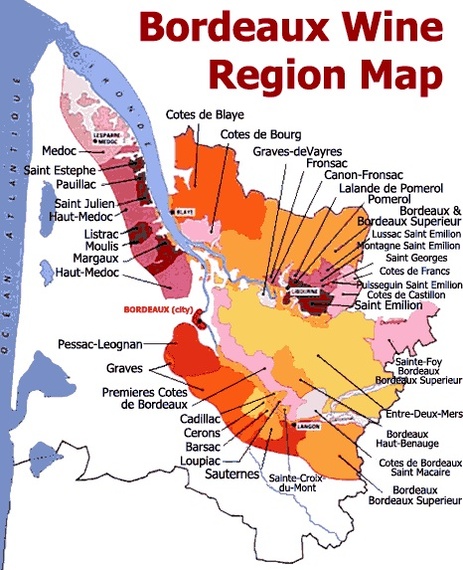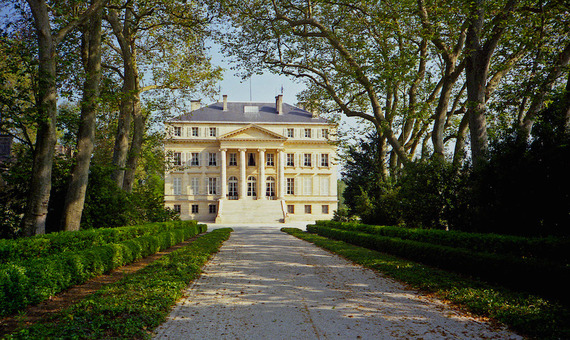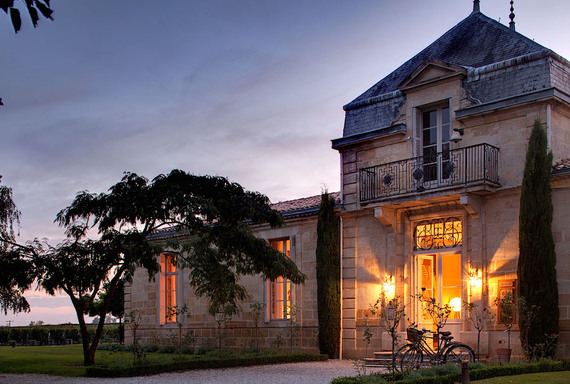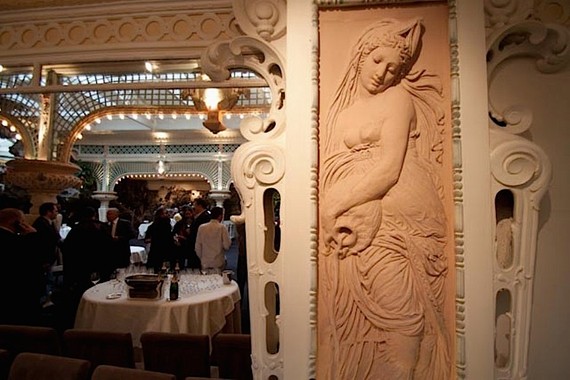from Vancouver Sun - Travel http://ift.tt/1qcFK96
Friday, October 31, 2014
Cemeteries: Finding the other side of life in death
from Vancouver Sun - Travel http://ift.tt/1qcFK96
Your loyalty program's just not that into you? Dump it.
from Vancouver Sun - Travel http://ift.tt/1qcFJSK
5 free things in Edinburgh, Scotland, from museums to a volcano with a 2,000-year-old fort
from Vancouver Sun - Travel http://ift.tt/13qlts0
A Photo Tour: Chocolatiers in Brussels
Belgium has been at the center of Europe's chocolate trade since the 1690s. With a million residents and about 500 chocolatiers, the average Belgian consumes over 15 pounds of chocolate annually.
Take a peek at some of the window displays:
Neuhaus opened its doors in 1857. In 1912, Jean Neuhaus Jr. created a chocolate that he named praline (a hard chocolate shell with a filling). This was to become one of the best known and most appreciated of Belgian creations worldwide. Jean's wife, Louise, invented the "ballotin" the cardboard chocolate box. Photo ©Susan Fogwell
Leonidas is one of the largest chocolate companies in the world.
Photo ©Susan Fogwell
Galler Photo ©Susan Fogwell
Galler's Window Display Photo ©Susan Fogwell
Photo ©Susan Fogwell
Photo ©Susan Fogwell
Photo ©Susan Fogwell
Photo ©Susan Fogwell
Photo ©Susan Fogwell
Photo ©Susan Fogwell
Photo ©Susan Fogwell
Photo ©Susan Fogwell
Photo ©Susan Fogwell
Photo ©Susan Fogwell
from Travel - The Huffington Post http://ift.tt/1s1nEHM
Strong Winds, Flooding And, Yes, Snow Mark Halloween In Chicago
After the city registered its first-ever measurable Oct. 31 snowfall on record earlier Friday, high waves and flooding on account of heavy winds caused city officials to shut down part of the Lake Michigan-adjacent Lake Shore Drive in the afternoon.
As winds gusted above 70 mph Friday afternoon -- part of what a WGN meteorologist has dubbed the "Halloween Howler" -- northbound lanes of Lake Shore Drive were shut down between North Avenue and Division Street, CBS Chicago reports.
Harrowing photos and videos of the flooding were shared widely on social media:
Flooded Lake Shore Drive in Chicago. http://ift.tt/1tphLsl
— Don Breitfelder (@DonBreitfelder) October 31, 2014
Windy City living up to its name today. 21 ft waves are closing parts of lake shore drive http://ift.tt/1tphLsn
— arielle vasquez (@relle_belle) October 31, 2014 Chicago rapper Chance the Rapper perhaps said it best:
Lake Shore Drive look like The Day After Tomorrow or something.
— Chance The Rapper (@chancetherapper) October 31, 2014 The stormy weather has also meant delays and cancellations at O'Hare International Airport. According to the Chicago Tribune, more than 300 flights were canceled through noon Friday, with more cancelations and delays anticipated. No cancellations or delays were reported at Midway International Airport.
Evening temperatures in Chicago may reach as low as the upper 30s -- making for some chilly trick-or-treating conditions. A lakeshore flood advisory is in effect in the area through 4 a.m. Saturday. Lake-effect snow is also possible in northwest Indiana and the far southwest Chicago suburbs, the Tribune reports.
from Travel - The Huffington Post http://ift.tt/1pcfKzR
Skwachays Lodge, Vancouver: Room service
Part boutique hotel, part indigenous art gallery and part social enterprise, Vancouver’s newly-opened Skwachays Lodge (pronounced skwatch-eyes) manages to balance all three with panache.
from - Travel RSS Feed http://ift.tt/1tq5dQ4
via IFTTT
Canada Imposes Visa Ban On Ebola-Hit Nations
OTTAWA, Oct 31 (Reuters) - Canada will stop issuing visas to people from those West African nations where the Ebola virus is widespread, the government said on Friday.
The federal citizenship ministry, explaining the move, said in an official document that "the introduction or spread of the disease would pose an imminent and severe risk to public health in Canada." (Reporting by David Ljunggren; Editing by Meredith Mazzilli)
from Travel - The Huffington Post http://ift.tt/1zS2WTJ
National Parks Graffiti Won't Be Easy To Remove
SALT LAKE CITY (AP) — A series of graffiti-like paintings on rocks in National Parks across the West set off a furor on social media this month, angering people who say they desecrated some of the nation's most famously picturesque landscapes. They've also created a headache for park managers who have the delicate task of cleaning up the sites without causing further damage.
It won't be easy to get rid of the paintings, which were posted on Instagram and Tumblr and then picked up by hiking blogs. Sandblasting and some chemical strippers can cause even more damage to irreplaceable natural features, especially if graffiti is near ancient rock art.
In some cases, workers use plastic kitchen spatulas to painstakingly scrape off paint. Workers test different strippers to figure out which will loosen the material without damaging rock, then rinse it off with lots of low-pressure hot water, gently scraping each layer away with the spatula, said National Parks spokesman Jason Olson.
"They will repeat that as often as it takes until they remove all the paint or until they can't remove any more," he said. He said Friday he didn't know how much it might cost to go remove the paint in eight parks across California, Colorado, Utah and Oregon. One colorful painting of a woman with blue hair at Crater Lake National Park is already covered in ice and snow and workers might not be able to reach it until next summer.
Casey Nocket, the 21-year-old suspect identified by the park service this week, allegedly used acrylic paint and signed with the handle "creepytings." Attempts to reach Nocket were unsuccessful. A phone listing for her was disconnected and her social media accounts have been shut down or made private.
The case became the subject of widespread social media outrage from people reacting to paintings inserted into the landscape and documented as an apparent artistic expression.
The National Park Service said this week they've found paintings in Yosemite, Death Valley and Joshua Tree in California; Crater Lake in Oregon; Zion National Park and Canyonlands in Utah; and Rocky Mountain in Colorado, where Colorado National Monument was also tagged.
Zion National Park is home red-rock bluffs, sweeping canyons— and now a backpack-sized drawing of a woman smoking on a rock near a trail named for emerald-colored pools of water.
It's not the first time rangers have had to clean up, though paint is an unusual choice for vandals there.
Supervisory ranger Ray O'Neil said minor graffiti is scratched onto rock every day. Rangers carry nylon bristle brushes and water to brush it off as they see it.
At Joshua Tree in California, the park service has graffiti they think is from Nocket to deal with, and also a project to clean up the historic Barker Dam, which is nearly covered with scratched-on graffiti.
"Even though people know they shouldn't do it, as soon as someone else has done they just jump right on board," said cultural resources chief Jason Theuer. Sandblasting the structure originally built in 1902 to provide water for cattle could cause microscopic cracks, damaging the surface and creating a home for water and bacteria that cause more damage. Instead, they're using paint to fill it in.
Rangers deal with graffiti nearly weekly there, and the most difficult material to clean off is metallic spray paint. In some cases, graffiti near ancient petroglyphs or pictographs is nearly impossible to remove and rangers have to leave it.
Even if the rock art itself isn't damaged, the soil itself can contain other essential archaeological clues like microfossils that can be damaged by cleanup chemicals.
That's why officials say people shouldn't remove images themselves if they see them. Instead, they're hoping that the high-profile case raises awareness about an issue that's all too common in the parks.
"It's a basic, fundamental underlying facet of human nature is to sort of leave our mark," said Theuer. "Our national parks are not the place for it."
from Travel - The Huffington Post http://ift.tt/1DDIId4
Dig a little deeper for the charms of Taipei: The Hedonist
My entire body aches as I dip a toe into the soothingly hot water.
from - Travel RSS Feed http://ift.tt/1rHdniR
via IFTTT
When Home Is Everywhere
A few days before my seventh birthday, we moved from our lovely Paris home to an even nicer place in Rye, NY. I went from being a city child to a true American suburbanite. I learned to walk to school and go home at 3 instead of 5 p.m.. I spent summers in my bathing suit going from neighbor's house to neighbor's house. In the winter, I wore my snowsuit to school and changed in the hall with all of my friends. It was more than just a different world, it was a different universe.
By the time America grew to feel like home, we were off again. It was London, England this time, and once again I had a slew of new customs and habits to get used to. By this time I was a little older and a little more aware of my surroundings. I attended an American school and had few British friends. Even though the language was the same, everything else about England was different and it took much longer to get used to living there. Eventually, I found my place and I grew to love London.
And then we moved again. Back to France, a skip and a hop across the Channel. A world away, nonetheless. I remember sitting at my desk in my new bedroom near Paris, sobbing to myself, "I just want to go HOME!" The problem was that I couldn't figure out where home was supposed to be. We'd been mere visitors in NY, even more transient in London. To all intents and purposes, I was home; it just didn't feel like it at all.
That strange feeling of not belonging stayed with me for a long, long time. Even when I found my French roots and settled back into Parisian life, I still had moments when I felt like a true outsider. To my French friends and family I never stopped being the American one. To myself, I was always both.
I stayed in France for years. I went to high school and college. Made great friends and lived the French life. But I never strayed too far from my American side. I devoured English language books, saw American movies in their "original version" (English with subtitles), found a few fun American restaurants, I even majored in English Literature. The French was strong in me, but it had some stiff competition.
The summer I turned 24 I interned in a NY advertising agency. I slipped right back into my American skin and in a heartbeat, felt right at home. I never really went back to Paris. I met my husband that summer and just went back to pack up my life and move to Boston. A year later, I dragged him to Paris with me so I could finish up my schooling. We lived in France for a year before moving to California, and we've been here ever since.
This summer I turned 38, I've lived half of my life in France and half of my life in the United States. If you ask me where home is, it'll take me a minute to answer. Home is here, and home is there. My roots are divided. France is the home of my childhood, America is where my life is, home of my children's childhoods. Some days I feel French, some days I feel American, there's no rhyme or reason to it. I have no desire to live there, yet I miss it terribly. This place is so very different, so very foreign to my native land, yet I feel so at home here.
Sometimes I run into people who have lived all over the world. It barely takes a few minutes for the kinship to become apparent. We are the ones without roots, the tumbleweeds. Sometimes I envy the people who know where they come from, who can point to "Home" on a map, who have a place to run to when they need nurturing. But at the end of the day, I think we are the fortunate ones. The world is our home, our roots are everywhere.
A version of this post originally appeared on It's my life...
Jessica Rosenberg is a writer, a mom, a blogger, a friend, a social media marketer, a wife, a sister, a daughter, and everything in between. She spends her days juggling work, passion, and life.
She regularly shares her thoughts and insights on her blog It's my life...
Her first novel, Aloha Also Means Goodbye, is available on Amazon!
from Travel - The Huffington Post http://ift.tt/1pbScv8
Quantum of the Seas, the most high-tech cruise ship yet, sets sail
Quantum of the Seas, billed as the smartest cruise ship yet to sail, was unveiled in Southampton ahead of its maiden voyage.
from - Travel RSS Feed http://ift.tt/1sS09jO
via IFTTT
Next Great Neighborhood: Paris's South Pigalle (Video)
Start of Brightcove Player By use of this code snippet, I agree to the Brightcove Publisher T and C found at http://ift.tt/s9cxKR. This script tag wil...
from Travel Blog | Travel + Leisure http://ift.tt/1wOuo0a
What are Sting's Top Hotels? We Talked Travel with the Musical Icon
from Travel Blog | Travel + Leisure http://ift.tt/108nJSN
Airlines face claims for millions after Supreme Court passenger compensation ruling
Britain’s airlines are preparing themselves for a flood of flight delay compensation claims after the Supreme Court threw out applications by two airlines to appeal earlier verdicts.
from - Travel RSS Feed http://ift.tt/1wNx4Kl
via IFTTT
Cellist And Beatboxer Treat Southwest Flight To Impromptu Performance
No, that's not the setup for a cheesy joke; the cellist-beatboxer collaboration actually happened, and the impromptu performance they gave passengers was more entertaining than any bad joke could ever be.
Cellist Francisco Vila and beatboxer Maximillian Reynolds (aka "Maxbeatbox") were on a flight bound for Denver earlier this month, reports The Telegraph, along with the Indianapolis University Chamber Orchestra. When they learned of each other's talents, they apparently decided to "wing it."
WATCH the cellist and the beatboxer perform, above.
H/T Digg
from Travel - The Huffington Post http://www.huffingtonpost.com/2014/10/31/cello-beatboxer-southwest-flight-plane-video_n_6077794.html?utm_hp_ref=travel&ir=Travel
Traveling in Bordeaux, France
The fact that you can easily arrange to visit the great wine estates of Bordeaux while staying in some sumptuous nearby hotels makes this area of southwest France one of the most soul- and appetite-satisfying vineyard regions in the world. Indeed, most chateaux are open to the public, as long as you write ahead. (To obtain names and addresses, contact the Bordeaux Wine Bureau in NYC; 212-477-9800.)

It is a huge area of more than 280,000 acres of vineyards, with 22,000 vineyard proprietors and 7,000 châteaux, or domaines, producing 800 million bottles of wine annually--compared with less than 36 million produced in the far smaller region of Burgundy. Way back in 1855 the wine merchants of Bordeaux created a classification of the region's very finest estates of the Médoc, Sauternes, and Barsac regions, based on the consistently high prices their wines sold for over the decades. These were broken down into quality categories called "crus" (growths), which in Bordeaux referred to an estate. Thus, there were Premier Crus (First Growths), Deuxièmes Crus (Second Growths), and on down to Cinquièmes Crus (Fifth Growths). The wines of Graves and St. Émilion were also classified; those of Pomerol and other regions were not. One St. Émilion wine, Château Haut-Brion, was listed under the Premier Cru appellation. In 1973, one wine of the Médoc, Château Mouton-Rothschild, was awarded First Growth status, but no other estate has succeeded in elevating its status since 1855.

Many of the classified crus are set on exquisite properties, usually home to their proprietors, with glorious manicured lawns and pebbly walkways leading to clear-cut vineyards ringed with roses. (If a pestilence is about to hit the vineyards, roses will catch it first and give the vineyard workers advance notice). Château Margaux (above), for instance, is a butter-yellow 1810 Neo-Palladian edifice designed by architect Louis Combes for the Marquis de la Colonilla. It has been called "The Versailles of the Médoc" and since 1946 has been listed as an "historic monument" of France.
The side effect is that visitors to the region are welcomed with open arms, by both the restaurants and the estates, which wouldn't mind at all if you go home with several cases of their wines. At Château Giscours (a Third Growth), which dates back to the 14th century, you may not only visit, you may also dine in their splendid restaurant with the estate's enologist, who will explain the wines you are drinking. There are also beautiful banquet rooms available for meetings and receptions.
The region, cut through by the Gironde River, which irrigates all the vineyards, also has some lovely places to stay while visiting the wineries. The city of Bordeaux has become a much livelier place than it used to be, now with 15 museums, including the Bordeaux Wine Museum, and beautiful squares and mansions that date back to the time of Victor Hugo, who was a member of the National Assembly here.
The city has fine many restaurants--including three with Michelin stars. Le Chapon Fin (below), with its fanciful fin-de-siècle décor, opened in 1823 and still keeps a classic Bordelais menu, with plenty of foie gras, roast squab, and a renowned roast lamb with sage butter. In warm weather take a table on the terrace of the more modern Pavillon des Boulevard, known for its delicious lobster in chestnut cream. And the small, intimate Jean Ramet, on the river's bank, is always populated with estate owners and merchants who come for the namesake chef's refined regional cooking, like foie gras with candied dates and orange. For something more casual, the rustic bistro Tupiña cooks many of its dishes over an open fire fueled by grape vines.
In the village of Pauillac there is the spectacular 17th century Château Cordeillan Bages (below), once a Carthusian monastery, with 25 rooms and 4 suites, and a Michelin two-star restaurant that serves cuisine of great finesse, from eggplant marinated in olive oil with langoustines with lemon-thyme, and rack of lamb with a fricassée of vegetables. In St. Émilion the place to stay is the Hostellerie de Plaisance, restored to pristine 18th century grandeur.
With 7,000 châteaux to see, visiting Bordeaux may take a while. But the pleasures of visiting once can only serve to bring you back again, wondering what wonderful wine you may have missed and what charming chateaux you haven't seen.

from Travel - The Huffington Post http://www.huffingtonpost.com/john-mariani/traveling-in-bordeaux-fra_b_6083104.html?utm_hp_ref=travel&ir=Travel


